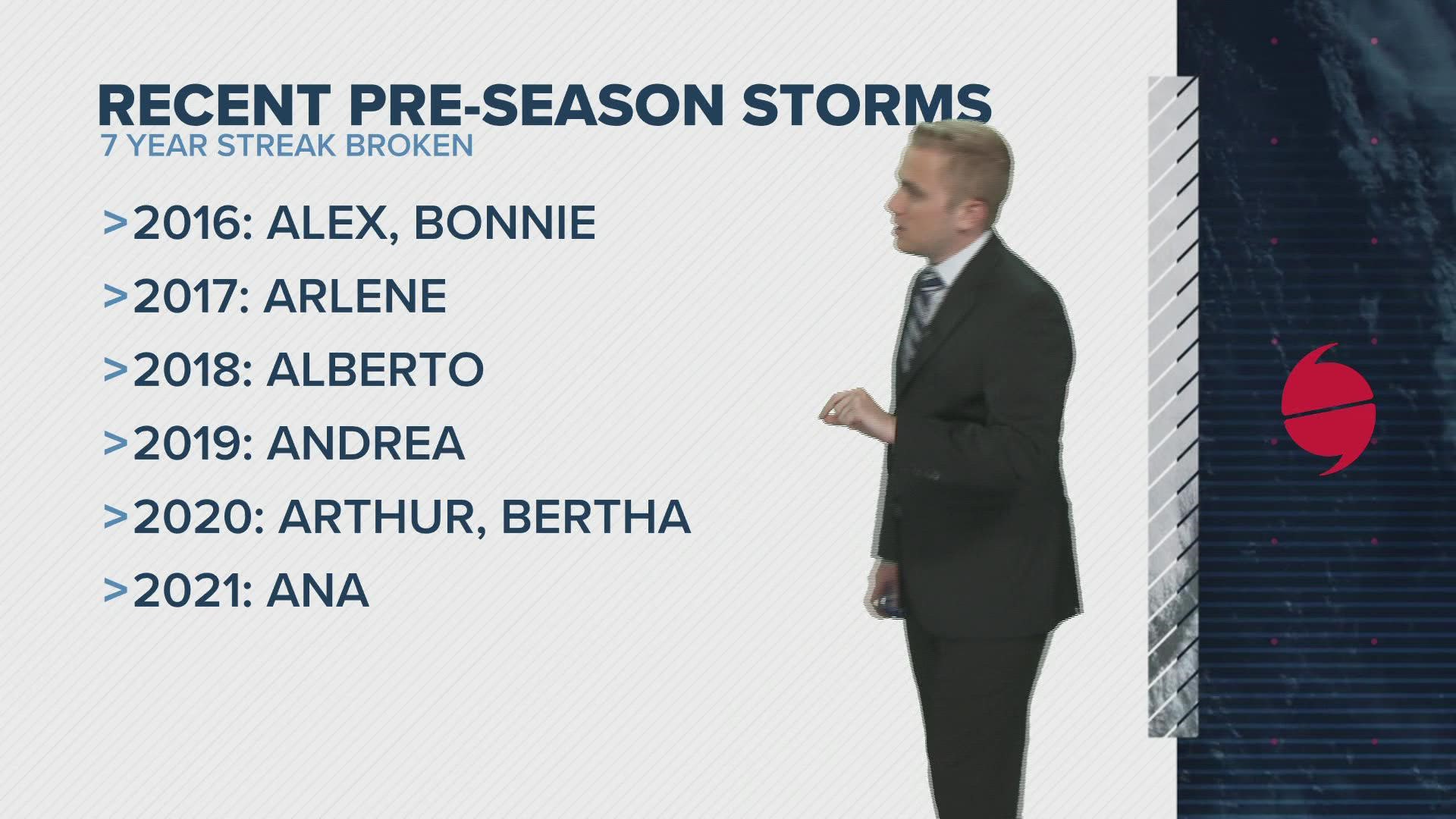For the past seven years, a tropical storm had formed before the official start of the hurricane season, which begins June 1 in the Atlantic basin. That's until 2022 came along.
The streak started in 2015 when Tropical Storm Ana formed on May 8 and became the earliest United States-landfalling tropical cyclone on record. The storm came ashore on the northeast coast of South Carolina.
Since then, eight additional storms formed before the start of the season, including two each in 2016 and 2020.
- 2016: Alex, Bonnie
- 2017: Arlene
- 2018: Alberto
- 2019: Andrea
- 2020: Arthur, Bertha
- 2021: Ana
Tropical Storm Bonnie, in 2016, made landfall just east of Charleston, South Carolina, bringing days of rain to the Palmetto state. Much of the state saw at least six inches of rain, with some parts seeing at least ten inches.
In 2018, Tropical Storm Alberto formed near the Yucatan Peninsula as a subtropical storm, intensifying into a tropical storm while in the Gulf of Mexico. It moved northward and made landfall near Laguna Beach, Florida, causing about $125 million in damage.
Tropical Storm Arthur kicked off the most-active year in the Atlantic basin, 2020. It passed just east of the Outer Banks, bringing rain to coastal areas of North Carolina and Virginia. Just days later, Tropical Storm Bertha developed east of Georgia, moving inland near Isle of Palms, South Carolina.
In 2021, Tropical Storm Ana formed in mid-May and stayed in the open Atlantic waters.
Despite no storm forming before the official start of the season, forecasters are calling for above-average tropical activity this year. NOAA’s outlook for the 2022 Atlantic hurricane season, predicts a 65% chance of an above-normal season, a 25% chance of a near-normal season and a 10% chance of a below-normal season.
In May, National Hurricane Center Director Ken Graham addressed the issue of hurricane season starting earlier.
"[The National Hurricane Center] is not opposed to changing the dates but wanted solid findings and background before we do it," said Graham. Any such change would have to be proposed to and approved by the World Meteorological Organization.
Graham also points out that in the past, more than 99% of storms that have formed, did so within the current hurricane season dates.
The National Hurricane Center is watching the remnants of what was once Hurricane Agatha in the Pacific basin, for development in the Atlantic basin within the next five days.

